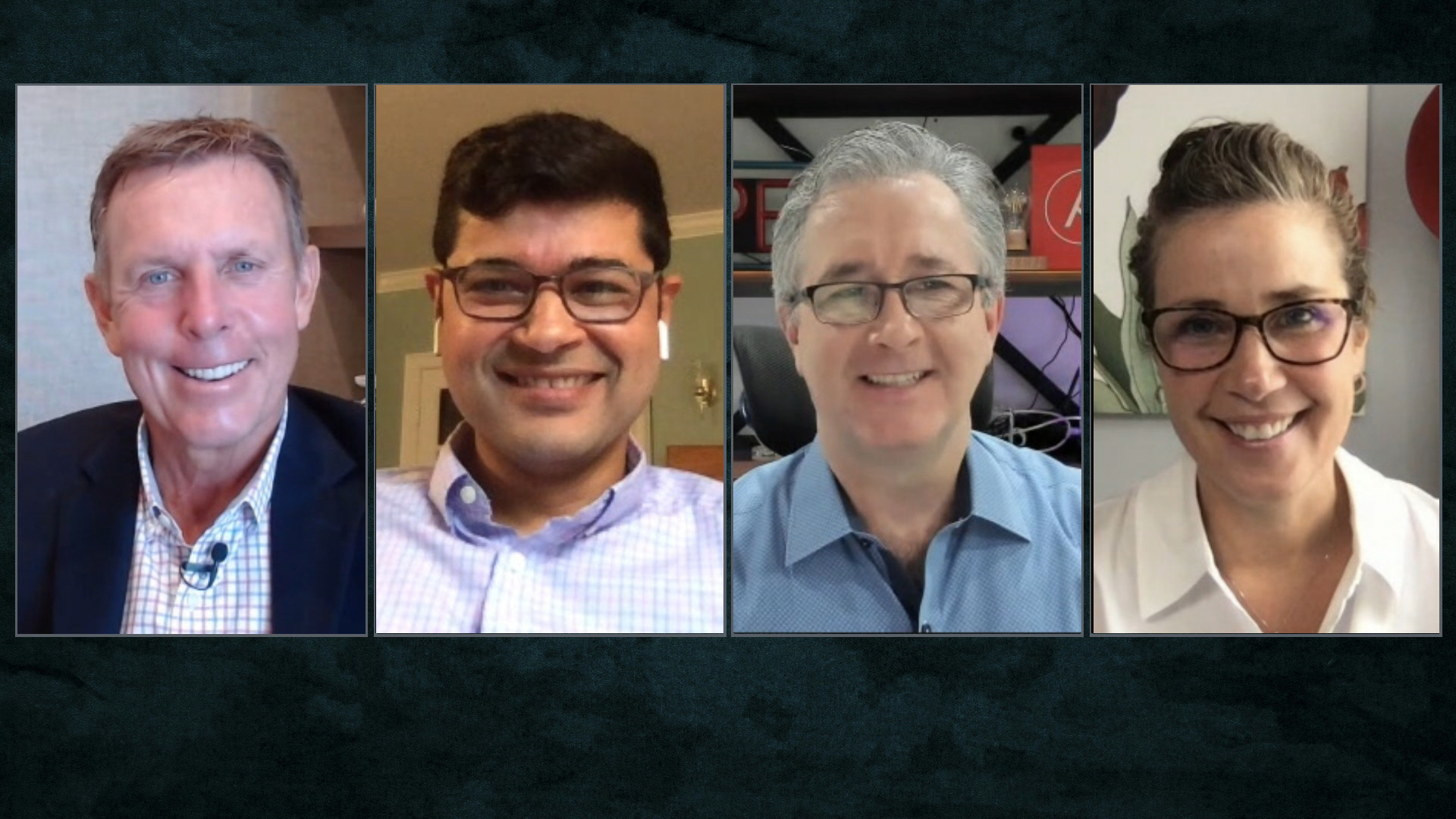 AI
AI
 AI
AI
 AI
AI
Enterprise has come to a consensus that hybrid cloud is the most efficient model for today’s digital economy. But as companies operate across a diverse landscape, managing data assets safely and efficiently becomes a complex task that exceeds human capabilities.
“We believe in the value of being able to give your applications flexibility, to use the best technology where you want it, how you need it, and pulling all of that together,” said Stefanie Chiras (pictured, right), senior vice president of the Red Hat Platforms Business Group at Red Hat Inc. “But core to that value proposition is making sure that it is consistent, it is secure and it is able to scale. And that’s really where automation has become a core space.”
Chiras was joined by Red Hat’s Ashesh Badani (pictured, second from left), head of products, and Joe Fitzgerald (pictured, second from right), VP and general manager of the Management Business Unit, for a panel discussion with John Walls, host of theCUBE, SiliconANGLE Media’s livestreaming studio, during AnsibleFest 2021. They discussed automation adoption within the enterprise. (* Disclosure below.)
Red Hat is a pioneer of open hybrid cloud, and the company’s Ansible automation platform has been designed to bring predictability to the hybrid experience. This is “essential as you start to move your workloads around and start to leverage the diversity that an open hybrid cloud can deliver,” Chiras said.
While chief information officers understand that automation is important, rolling out adoption can be a challenge. One barrier is a lack of employee confidence that automation can perform. Comparing this building trust in self-driving vehicles, Fitzgerald said: “People are still not quite comfortable with that level of automation; they want to be able to trust, but verify, and maybe have their hands near the wheel.”
Even when employees understand they need automation, surrendering control of tasks they are used to doing manually doesn’t happen overnight. They need a period where they can observe what the automation is doing, has done, and is going to do, making visibility an essential component of any automation platform.
Ansible has the transparency and visibility that customers require to start their automation journey, according to Fitzgerald. It also provides the autonomy to take action when it identifies issues. Once customers experience this, they adopt automation ”at scale,” he added.
Financial giant JPMorgan Chase & Co. provides a mature Ansible use case, with 50,000 employees using Ansible automation.
“They’ve got a community of practice where they’ve got people in over 22 countries that are sharing over 10,000 playbooks,” Fitzgerald said. “They’ve taken automation strategically and embraced it and scaled it out at a level that most other organizations are envious of.”
Watch the complete video interview below, and be sure to check out more of SiliconANGLE’s and theCUBE’s coverage of during AnsibleFest 2021. (* Disclosure: TheCUBE is a paid media partner for AnsibleFest. Neither Red Hat Inc., the sponsor for theCUBE’s event coverage, nor other sponsors have editorial control over content on theCUBE or SiliconANGLE.)
Support our mission to keep content open and free by engaging with theCUBE community. Join theCUBE’s Alumni Trust Network, where technology leaders connect, share intelligence and create opportunities.
Founded by tech visionaries John Furrier and Dave Vellante, SiliconANGLE Media has built a dynamic ecosystem of industry-leading digital media brands that reach 15+ million elite tech professionals. Our new proprietary theCUBE AI Video Cloud is breaking ground in audience interaction, leveraging theCUBEai.com neural network to help technology companies make data-driven decisions and stay at the forefront of industry conversations.